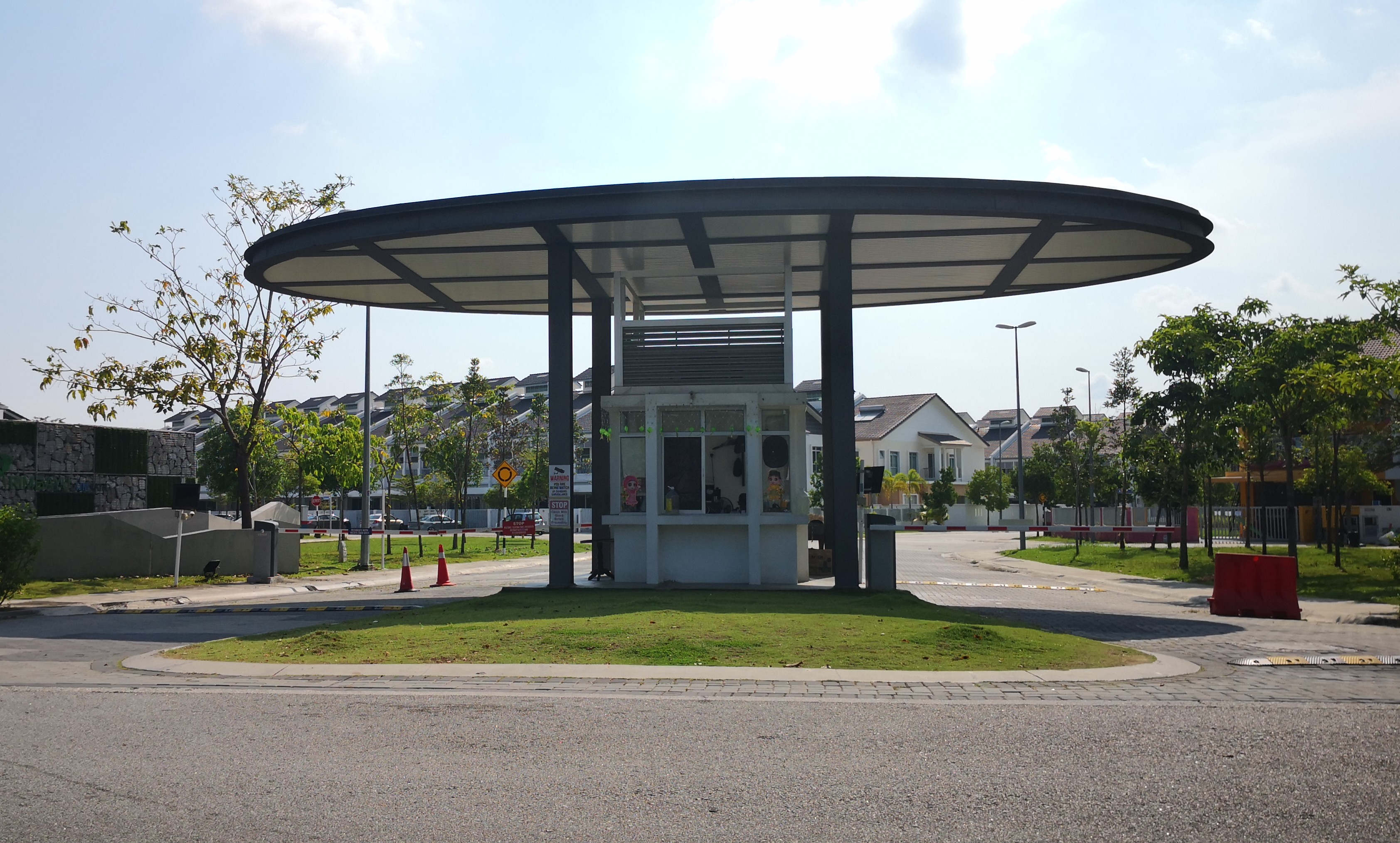Latest legal issues surrounding Gated and Guarded Communities in the State of Selangor Darul Ehsan, Malaysia
Contact
Latest legal issues surrounding Gated and Guarded Communities in the State of Selangor Darul Ehsan, Malaysia
Real estate agent Christopher Chan, together with litigation experts Eric Lai Tuck Sing and Lawrence Tan, outlines what buyers must take into account before investing in property within a gated community.
This article is intended as a preliminary guide only and refers to some but not all elements required to consider in detail prior to starting any property dealings or due diligence. Property dealings are often complex, especially in foreign countries and we highly recommend you seek independent professional advice... read more...
With the preoccupation with lifestyle living and security, many developers have developed many gated and guarded communities, including high-rise accommodation such as service apartments and condominiums, as well as landed strata title properties such as townhouses, cluster homes, terraced, semi-detached and detached houses.
There are essentially 2 types of Gated & Guarded Communities (G & G) and they are either with strata titles or non-strata titles as follows:
1. Those that are with strata titles are development schemes whereby the land is divided into parcels where the common property and accessory parcels are managed by the joint management body (JMB) or the management committee (MC). These developments are governed by the Strata Management Act 2013 (SMA) and Strata Title Act 1985 (STA).
The STA was amended to allow landed parcels (such as terraced and semi-detached houses) to be regulated under the SMA which is statutorily enforceable.
It is interesting to note that our STA is modelled on the Australian New South Wales Conveyancing (Strata Titles) Act 1961 & the Singapore Land Titles (Strata) Act 1967.
2. Those that are non-strata titles (i.e. issued with individual titles) are developments where there is a guard post at the entry and exit point and may have fencing surrounding the neighbourhood. This is subject to the approval by the local authorities where they are conditions to be met.
Common property and accessory parcel (for developments with strata titles)
Common property refers to any other area in the development which does not belong to an individual strata unit owner. Rather, common property is shared between all property owners. Examples include the swimming pool, lifts and the gymnasium.
In simple terms, the accessory parcel is a property that you own but is not attached to the main parcel. An example of an accessory parcel is your car park which is located away from your main condo unit.

Registered Estate Agent Christopher Chan. Source: Christopher Chan
History of G & G communities
The concept of G&G developments for landed property gained popularity in the late 1990s and early 2000s with the rise of townships such as Desa ParkCity in Kepong. When buying from the developer, the purchaser would usually sign the Sale and Purchase Agreement together with Deed of Mutual Covenants (DMC), constitution of society/memorandum of association (upon formation of Residents’ Association (RA)). But since the amendments to the STA in 2007, landed properties (called ’land parcels’) held under strata titles are regulated under the SMA and STA.
In a new development, the developers would usually include G&G features as part of the overall plan and incorporate these features as part of their marketing strategy to accommodate the demands from the public. The sales agent of the developer could be telling you all sorts of stories on how great their project is, but do you know exactly what you are buying and what are the documents that you will be signing ? What are the implications of the different type of Sales and Purchase Agreement (“SPA”) ?

One of the gated communities (non-strata title) in Selangor. Source: Christopher Chan
When buying from the developer, the purchaser would usually sign the Sale and Purchase Agreement together with Deed of Mutual Covenants (DMC), constitution of society/memorandum of association (upon formation of Residents’ Association (RA)).
But since the amendments to the STA in 2007, landed properties (called ’land parcels’) held under strata titles are regulated under the SMA and STA.
In a new development, the developers would usually include G&G features as part of the overall plan and incorporate these features as part of their marketing strategy to accommodate the demands from the public.
The sales agent of the developer could be telling you all sorts of stories on how great their project is, but do you know exactly what you are buying and what are the documents that you will be signing? What are the implications of the different type of Sales and Purchase Agreement (“SPA”) ?

Eric Lai of Lai & Associates. Source: Lai & Associates
The difference between a strata and non-strata title neighbourhood
The purchasers should always take note of the SPA to be signed by them in order to be aware of which schedule of the Housing Development (Control and Licensing) Regulations 1989 it falls under.
Generally, the developer could only use either Schedule G or Schedule H.
Schedule G is used for the selling of landed properties with individual titles while Schedule H is used for the selling of landed properties and/or condominium-style developments with strata titles.
More often than not, the sales agent and the lawyers appointed by the developers will not inform you which schedule your SPA falls under.
The purchasers should, therefore, be aware of the difference between the strata title properties and individual title properties to ensure that the G&G features as advertised by the developers could be incorporated legally.
For strata title properties, irrespective of whether it is landed properties and/or condominium-style development, it is less of an issue because for strata title properties, you are not only the owner of your property but you are also the joint owner of all the common facilities provided in the development.
This means that anything within the development is essentially private property and is managed by the developers themselves or the joint management bodies.
Since it is private property, the developers are allowed to set up their own G&G communities by putting in an application to the relevant local authorities.
The management and the setting up of the G&G communities in strata title properties are governed by the Strata Management Act 2013.
One example of a big difference between a landed property (individual title) and a landed strata title property is with regard to renovations. As regards the former, one has to obtain the local council’s approval for the external renovations as this has to comply with the provisions of the Street, Drainage and Building Act 1974 and the Uniform Building By-Laws 1984.
In the latter, one is bound by a DMC/ a set of house rules imposed by the Joint Management Body (JMB) or Management Corporation (MC).
These rules generally imposed restrictions on the type of external renovations that be carried out to ensure uniformity in the exterior of the properties. In most cases, the JMB/MC will not allow external renovations to take place.

Litigator Lawrence Tan. Source: Lai & Associates
What you should take note of:
Purchasers must take extra caution when they are purchasing for landed properties advertised to be one of the G&G communities but are held under individual titles.
Unlike strata title properties where its SPA are under Schedule H, wherein the management and the setting up of the G&G communities are governed by the Strata Management Act 2013, there are no clear legislation enacted to govern the management and the setting up of the G&G communities with individual title properties as Strata Management Act 2013 doesn’t apply here.
As mentioned above, what the developer normally will do is to enter into a separate DMC with the purchasers on top of the SPA.
The DMC will then set out the obligations of the developers and the purchasers in relation to the management of the properties, but whether the G&G communities can be set up will largely depend on the different set of rules set by different local authorities.
For example, in Selangor, the Housing and Property Board of Selangor does not allow perimeter fencing to be built surrounding the residential area except for safety reasons as in the case of a residential area being located next to the highway or river.
Remember, without proper approval from the local authorities, any attempt to close, barricade or restrict the access of a public road, drain or space will constitute an offence under Section 46(1) of Street Drainage and Building Act 1974.
So make sure you check and confirm with the sales agent that the G&G features advertised to you are actually legally approved by the local authorities.
Read more about the contributors:
Christopher Chan, Registered Estate Agent
Eric Lai Tuck Sing, Senior Counsel at Lai and Associates
Lawrence Tan Kim Kai, Litigator set to join Lai and Associates
This article and the above linked articles are not complete and are intended as preliminary guides only. These guides refer to some elements to consider prior to starting any property dealings or due diligence. Property dealings are often complex areas, especially in foreign countries and we highly recommend you seek independent professional advice... read more...








